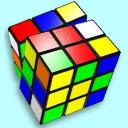Yahoo Answers is shutting down on May 4th, 2021 (Eastern Time) and beginning April 20th, 2021 (Eastern Time) the Yahoo Answers website will be in read-only mode. There will be no changes to other Yahoo properties or services, or your Yahoo account. You can find more information about the Yahoo Answers shutdown and how to download your data on this help page.
Trending News
Statistics Question...Please HELp?
A painter has 4 benches to paint. He has paint of the following colours: RED, YELLOW, WHITE and BLACK. In how many ways can the benches be painted if
(a) he chooses the same colour
Answer 4
(b) at least one bench is of different colour
I've got 15 but the answer says 31???????
(c) all the benches are of different colours
Answer 1
(d) at least 2 benches should be painted red
I've got 11 but the answer says 10?????????
2 Answers
- PuzzlingLv 76 years ago
I like everything that freond1 has said. As for his comment about solving this just with combinations, you can if you think of it as follows.
Think of the benches as indistinguishable objects --> oooo
Imagine you have 3 dividers that you are going to place ---> |||
(Anything before the first divider will be RED, anything between the 1st and 2nd will be YELLOW, etc.)
With this set-up:
oooo||| means 4 red benches, 0 yellow benches, 0 white benches, 0 black benches.
oo||o|o means 2 red benches, 0 yellow benches, 1 white bench, 1 black bench
Every arrangement of the 7 symbols equates to one painting pattern.
The number of painting patterns is 7C3 because we can choose within the 7 positions, where the dividers will go (or equivalently 7C4 for where the benches will go).
7C3 = 7C4 = 35 ways
PART A:
All 4 benches are counted as a single object that is going to be painted. There are still 3 dividers so we want the arrangements of O|||
4C1 = 4C3 = 4 ways
PART B:
We have 35 ways to paint the benches, but we exclude the cases in part A:
7C3 - 4C1 = 31 ways
PART C:
This is the following pattern:
o|o|o|o
= 1 way
PART D:
First just put two benches at the front (they will automatically be painted red). Now you have 2 more benches and 3 dividers.
5C3 = 5C2 = 10 ways
- Anonymous6 years ago
I presume (a) is clear. (c) being 1 tells me that the benches cannot be distinguished. Consequently we are just looking at 4-tuples of colors where order doesn't matter. Or "sets" of 4 colors where colors can be repeated.
(b) seems to say simply that all 4 can't be of the same color.
You can have
1) 3 of one color and 1 of a second. That gives you 4 x 3 = 12 ways.
2) 2 of one color and 2 of a second. That gives you 4C2 = 6 ways.
3) 2 of one color, 1 of a second, and 1 of a third. That gives you 4 X 3C2 = 4x3 = 12 ways.
4) 1 of each color. That gives you 1 way.
12 + 6 + 12 + 1 = 31
(d) says two are red, so you only have choices for the other 2. Again you have to break down the cases.
1) 2 of the same color: 4 choices
2) different colors: 4C2 = 6
4 + 6 = 10
I was tempted to say you have 4 choices for the 3rd, and 4 for the 4th, giving you 4x4 = 16 but that is wrong. It overstates things since every combination of different colors is counted twice (Red/White and White/Red, e.g.). Or you can say it's wrong because it make the order matter, when we've established that it doesn't.
To cut down the 16, recognize that 4 are the same color, and 12 are of different colors counted twice, so it's 4 + 12/2 = 4+6 = 10, as already shown.
This is a tricky problem with some subtleties. It seems like you can solve it just with combinations, but it takes a bit more than that.


